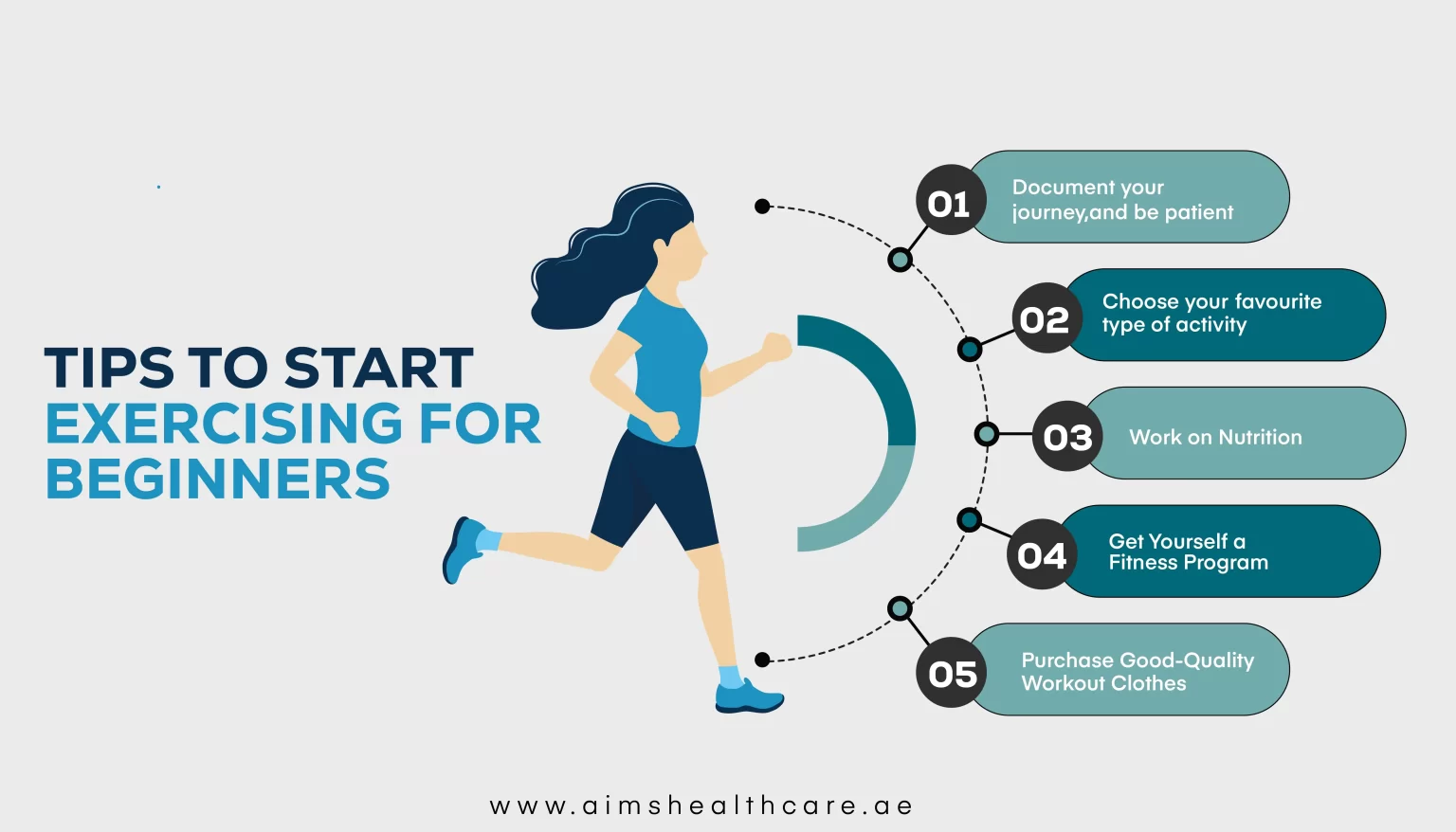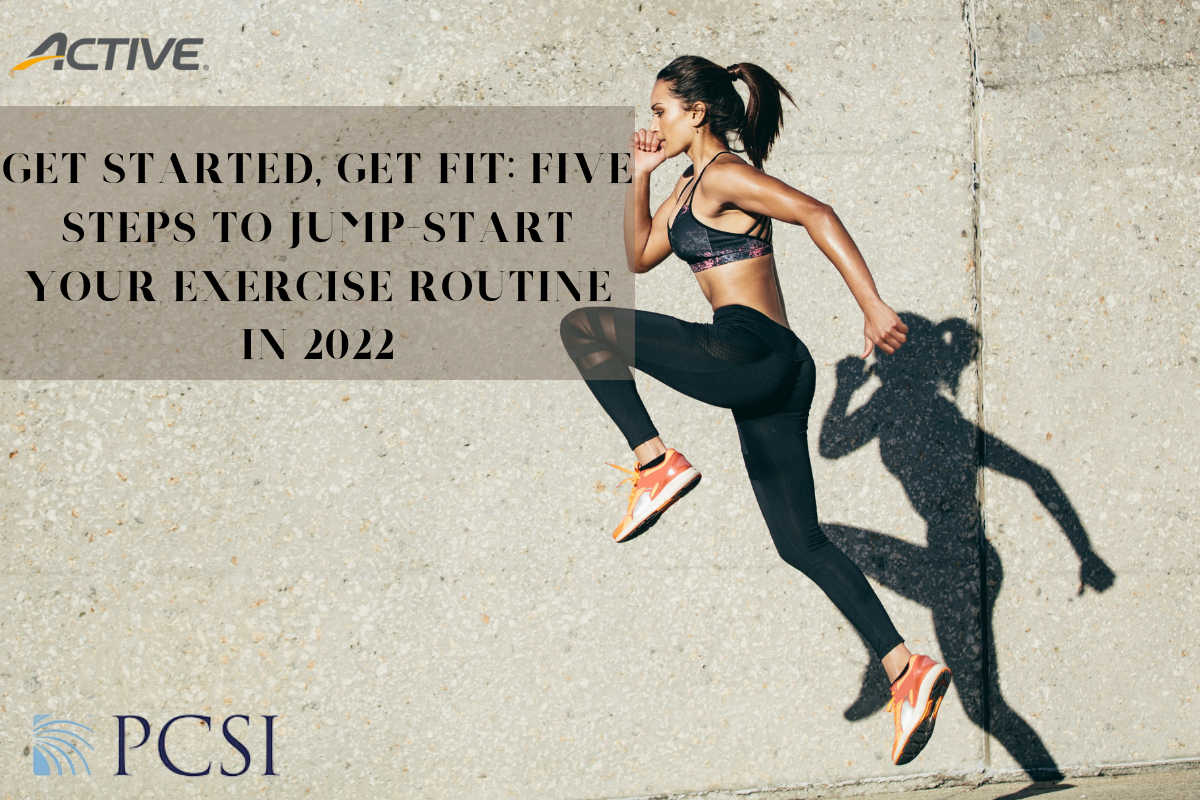Starting to exercise can feel overwhelming, especially if you don’t know where to begin. You might worry about making mistakes or not seeing quick results.
But what if getting active could be simple, enjoyable, and fit right into your daily life? This guide will show you easy steps to start exercising without stress or confusion. By the end, you’ll feel confident and ready to take control of your health—one small move at a time.
Keep reading, because your best self is just a few steps away.

Credit: glistrategies.com
Benefits Of Regular Exercise
Exercise is one of the best habits to improve your life. It helps your body and mind in many ways. Regular activity can make you feel stronger, happier, and healthier. The benefits last for a long time. Start small and enjoy the positive changes.
Physical Health Improvements
Exercise strengthens your muscles and bones. It helps control weight and improves heart health. Your energy levels grow, and you sleep better. Regular movement lowers risks of diseases like diabetes and stroke. Your body becomes more flexible and balanced.
Mental Well-being Boost
Exercise lifts your mood and reduces stress. It helps fight anxiety and depression. Physical activity makes your brain release good chemicals. These chemicals improve focus and memory. Feeling better in your mind helps you handle daily challenges.
Long-term Lifestyle Advantages
Regular exercise builds habits that last for life. It supports healthy aging and independence. Staying active helps keep your body working well. Good habits reduce future health problems. Exercise can make everyday tasks easier and more fun.
Choosing The Right Activity
Choosing the right exercise helps you stay motivated and enjoy your routine. Picking activities that fit your tastes and abilities makes exercise feel easier. It also helps you build habits that last longer. Start with what feels good and doable. This approach makes exercise less like a chore and more like fun.
Identifying Personal Interests
Think about activities you like or want to try. Do you prefer being indoors or outside? Do you enjoy group sports or solo workouts? Choose exercises that match your hobbies or curiosity. Enjoyment helps keep you active. Exercise feels less hard when you like what you do.
Considering Fitness Levels
Start with exercises that match your current strength and stamina. Avoid intense workouts that cause pain or tiredness. Simple movements or short sessions work well at first. Gradually increase time and effort as your fitness grows. Safe progress keeps you healthy and motivated.
Exploring Different Exercise Types
Try various exercises to find what suits you best. Walking, swimming, yoga, or dancing all offer benefits. Mix activities to keep things fresh and exciting. Different workouts help improve strength, flexibility, and endurance. Variety also reduces boredom and injury risk.
Setting Realistic Goals
Setting realistic goals is a key step to start exercising. Clear goals help keep you motivated and focused. They make your fitness journey feel possible and less overwhelming. Goals should be specific and doable. This way, you can see progress and feel proud.
Short-term Milestones
Short-term milestones are small targets you reach quickly. They keep you encouraged and on track. Examples include walking 10 minutes daily or doing 5 push-ups. These steps build your confidence. Celebrate every small win to stay motivated.
Long-term Objectives
Long-term objectives are your bigger goals. They take time and steady effort. Examples might be running a 5K or losing 10 pounds. These goals give your exercise purpose. Break them into smaller tasks to avoid feeling stuck.
Tracking Progress
Tracking progress helps you see how far you’ve come. Use a notebook, app, or calendar to record workouts. Note dates, times, and how you feel. This keeps you honest and motivated. Adjust goals if needed based on your progress.
Creating A Simple Routine
Creating a simple exercise routine helps you stay consistent and avoid burnout. Start with small steps that fit your current fitness level. A clear routine makes it easier to follow and track progress. Focus on balance, warm-ups, cool-downs, and fitting exercise into your daily life.
Balancing Workouts And Rest
Balance is key. Plan workout days and rest days. Rest helps muscles recover and grow stronger. Overworking can lead to injury and tiredness. Begin with two or three workout days per week. Add rest days or light activity on other days. Listen to your body and adjust as needed.
Incorporating Warm-ups And Cool-downs
Warm-ups prepare your body for exercise. They increase blood flow and reduce injury risk. Spend 5 to 10 minutes on light activity like walking or stretching. Cool-downs help your body relax after workouts. Use gentle stretches or slow walking for 5 to 10 minutes. Both warm-ups and cool-downs improve your routine’s safety and effectiveness.
Adapting To Busy Schedules
Busy days can make exercise hard. Short workouts still help. Try 10 to 15 minutes of activity like walking or bodyweight exercises. Use breaks during work or chores for quick movement. Plan exercise at the same time daily to build habit. Flexibility keeps your routine realistic and easy to follow.
Staying Motivated
Staying motivated is key to starting and keeping up with exercise. Many people begin with excitement but lose interest quickly. Motivation helps you push through tough days and keep moving forward. It is normal to face ups and downs. Finding ways to stay motivated makes exercise a habit, not a chore.
Finding Support Systems
Support from others makes exercise more enjoyable. Friends, family, or workout groups can encourage you. Sharing your goals helps you stay accountable. Join local classes or online communities. Having someone cheer you on boosts your motivation. Talking about your progress keeps you focused.
Celebrating Small Wins
Small achievements build confidence and energy. Celebrate every step, like a longer walk or extra push-ups. These wins show your progress and keep you inspired. Reward yourself with rest or a favorite healthy snack. Acknowledge your effort daily. This positive feeling pushes you to continue.
Overcoming Common Barriers
Barriers like time, tiredness, or lack of skills stop many. Plan short workouts that fit your schedule. Start with easy exercises to build strength. Rest well to avoid burnout. Remember, all progress counts, no matter how small. Adjust your routine to suit your needs. Keep going despite challenges.

Credit: aimshealthcare.ae
Monitoring And Adjusting
Starting exercise is exciting, but progress needs careful watching. Monitoring and adjusting your routine helps you stay safe and improve steadily. It also stops injuries and keeps motivation high.
Paying attention to your body signals, changing exercises safely, and checking results often are key steps. These help you make smart choices and get the best from your workouts.
Listening To Your Body
Your body sends signs during exercise. Notice pain, tiredness, or discomfort. These signals tell you to slow down or rest. Ignoring them can cause harm. Learn to tell the difference between good effort and bad pain. Rest if you feel sharp pain or extreme fatigue.
Modifying Exercises Safely
Change exercises to suit your strength and skill. Use easier versions or lower weights if needed. Make changes slowly, not all at once. Avoid risky moves that cause discomfort. Safe adjustments help you build strength and confidence without injury.
Evaluating Results Regularly
Check your progress every week or two. Look for better strength, endurance, or mood. Write down how you feel after workouts. Small improvements show your plan works. If progress stops, change your routine. Regular checks keep you moving forward.

Credit: pcsifl.com
Frequently Asked Questions
What Is The Best Way To Start Exercising Safely?
Begin with light activities like walking or stretching. Gradually increase intensity to avoid injury. Always warm up before workouts and cool down afterward.
How Often Should Beginners Exercise Each Week?
Start with 3 days per week, allowing rest days. Aim for 30 minutes per session. Consistency is key to building a lasting habit.
What Equipment Do I Need To Begin Exercising?
Minimal equipment is needed initially. Comfortable shoes and breathable clothes suffice. Optional items include a yoga mat or resistance bands.
How Do I Stay Motivated To Keep Exercising?
Set clear, achievable goals. Track progress regularly and reward milestones. Join a group or find a workout buddy for support.
Conclusion
Starting exercise is easier than you think. Small steps build good habits. Choose activities you enjoy and feel comfortable doing. Set simple goals and track your progress. Rest and listen to your body every day. Stay patient and keep moving forward.
Exercise improves your mood, health, and energy. You have the power to change your life. Begin today, and watch your strength grow.
